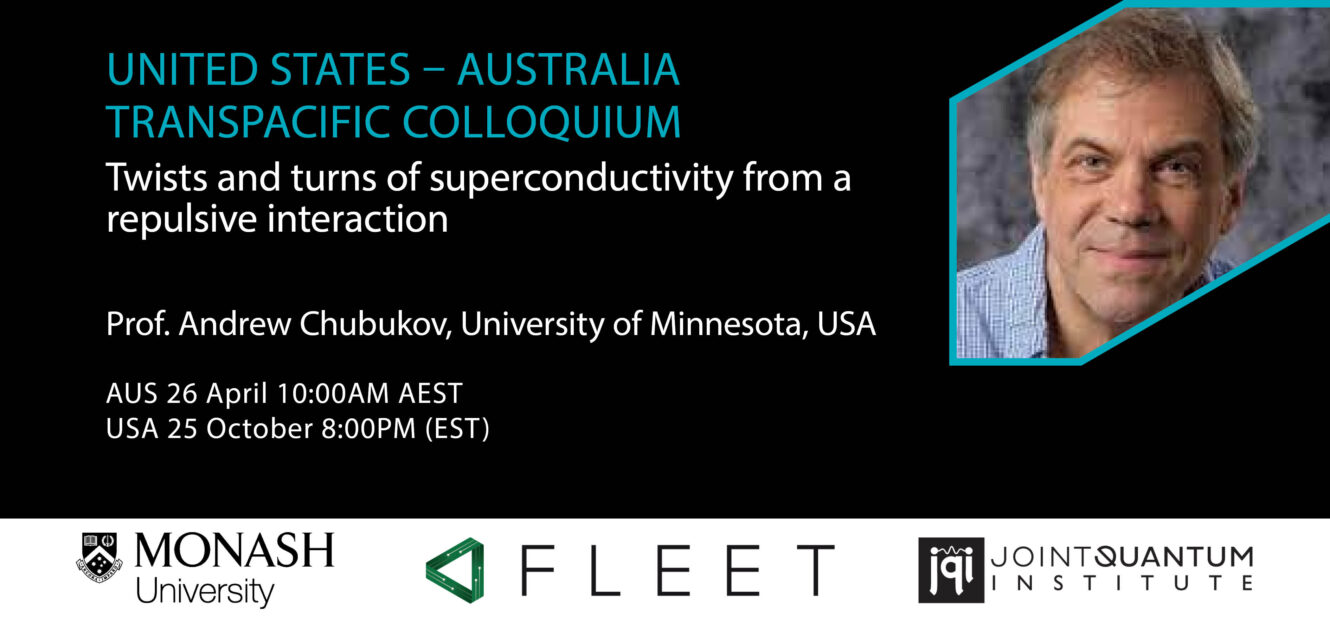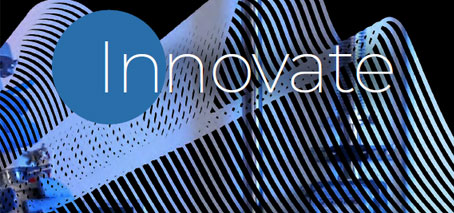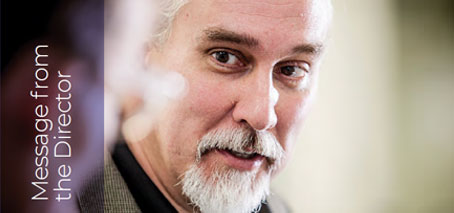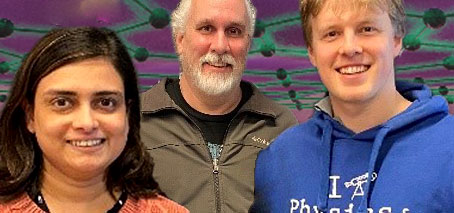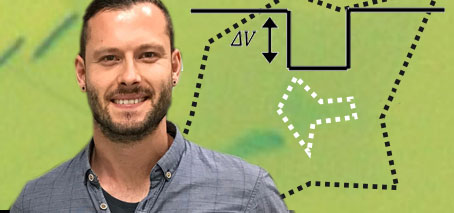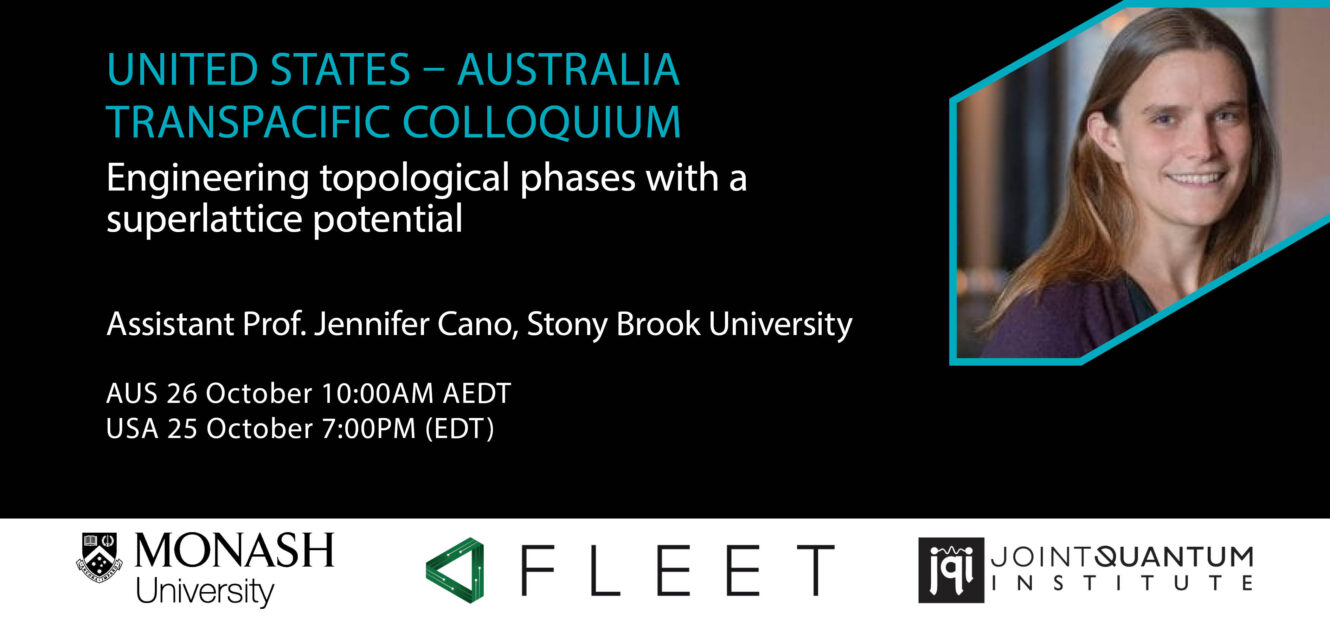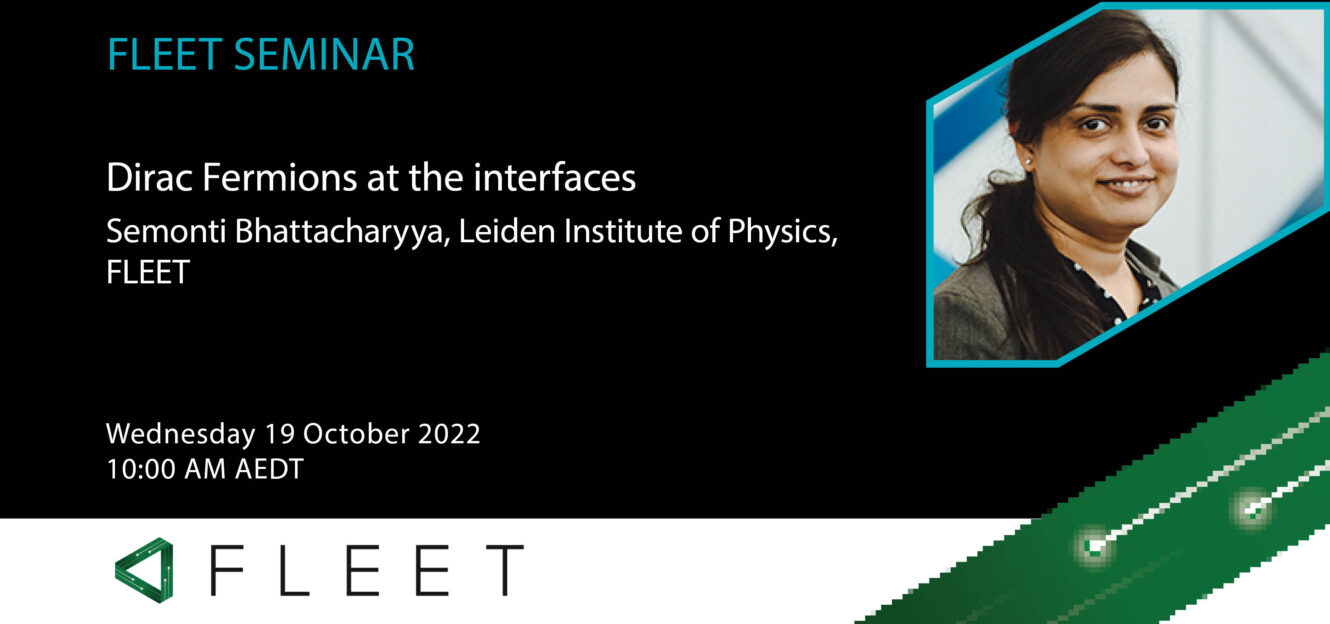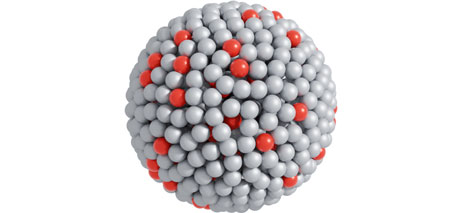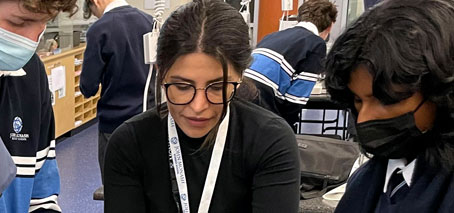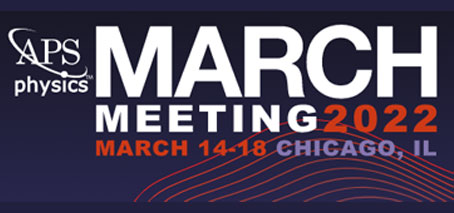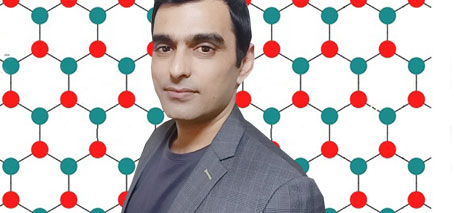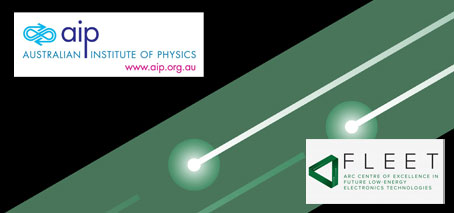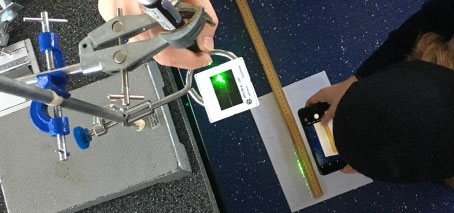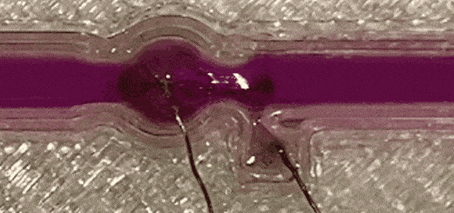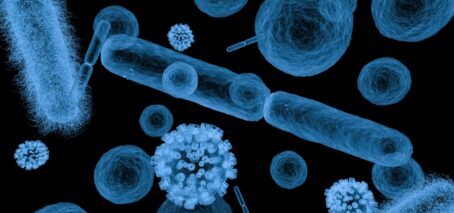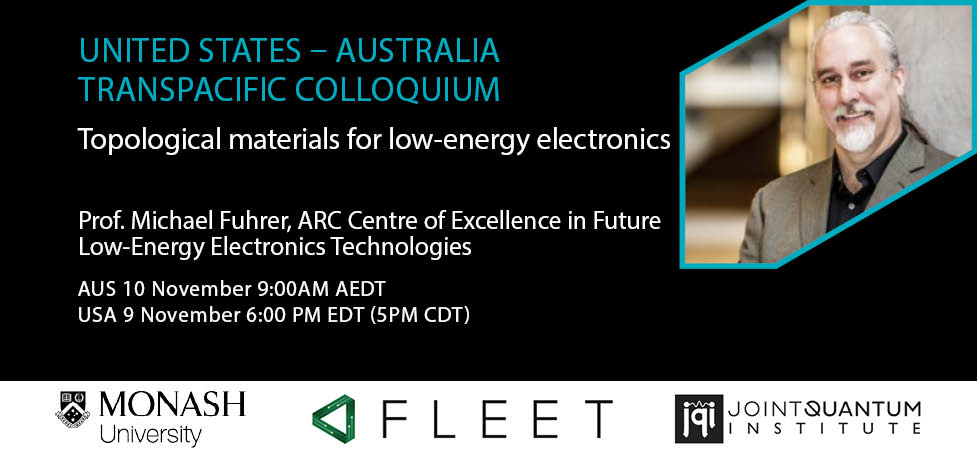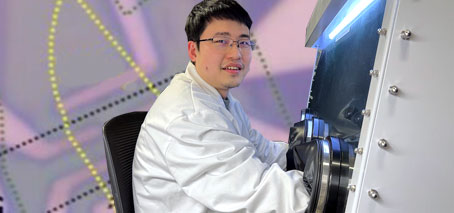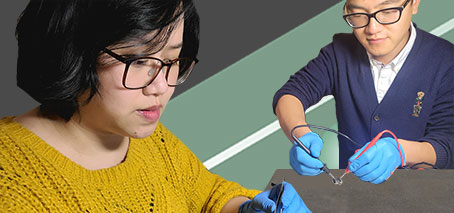Prof. Andrey Chubukov, Department of Physics, University of Minnesota Catch up on YouTube In this colloquium, I will review recent and not so recent works that aim to understand whether a nominally repulsive Coulomb interaction can give rise to superconductivity. I discuss a generic scenario of the pairing, put forward by Kohn and Luttinger back in 1965, and briefly review …
FLEET is pursuing the following research themes to develop systems in which electrical current can flow with near-zero resistance: Topological materials Exciton superfluids Light-transformed materials The above approaches are enabled by the following technologies: Atomically-thin materials Nanodevice fabrication FLEET’s approach is multidisciplinary, combining efforts across condensed-matter, cold-atom physics, material science and nanofabrication. FLEET will: Develop and progress new concepts for …
FLEET 2022: Message from the Director
2022 marks the fifth full year of FLEET operations. At this stage in the Centre’s life, FLEET is focused on demonstrating key research milestones with the highest impact, pathways to translate the most promising research results, and understanding and quantifying the impact that FLEET has made – not only in research, but in training, outreach and diversity. These activities will …
A shield for 2D materials that adds vibrations to reduce vibration problems
Ultra-thin, liquid-metal-printed oxide can improve performance of your transistor by suppressing vibrational resistance Counterintuitively, this occurs by adding extra phonons (vibrations) into the system This oxide can protect your transistor against further processing Monash University researchers have demonstrated a new, counterintuitive way to protect atomically-thin electronics – adding vibrations, to reduce vibrations. By ‘squeezing’ a thin droplet of liquid gallium, …
Trapping polaritons in an engineered quantum box
High exciton-polariton density in an engineered quantum box Possible pathway to future, ultra energy-efficient technologies Australian researchers have engineered a quantum box for polaritons in a two-dimensional material, achieving large polariton densities and a partially ‘coherent’ quantum state. New insights coming from the novel technique could allow researchers to access striking ‘collective’ quantum phenomena in this material family, and enable …
US-Aust Colloquium. Engineering topological phases with a superlattice potential
Assistant Professor, Jennifer Cano. Department of Physics and Astronomy, Stony Brook University, Flatiron Institute Missed the presentation? Catch up on FLEET’s YouTube Channel here Spontaneous symmetry breaking on the surface of a topological insulator can realize exotic quantum phases such as a quantum anomalous Hall insulator or topological superconductor. However, in all known 3D topological insulators, the Coulomb interaction is …
FLEET Seminar. Dirac Fermions at the interfaces
Semonti Bhattacharyya, Leiden Institute of Physics, Leiden University Monash University, Melbourne, ARC Centre of Excellence in Future Low Energy Electronics Technology Catch up on YouTube The low-energy electrons in graphene and topological insulators manifest themselves as Dirac fermions, because of their linear band structures. These electrons are unique compared to ordinary semiconductors because of their gapless nature, and protection from …
US-Aust Colloquium. The rich landscape of intertwined electronic phases in quantum materials
Prof. Rafael M. Fernandes, University of Minnesota Catch up on YouTube Quantum materials encompass a wide family of systems that display many fascinating phenomena, from high-temperature superconductivity to topological order. They stand out not only as promising candidates for new technological applications, but also as windows into the fundamental microscopic properties of interacting electrons, whose collective behaviour can be very …
Monash: Research Fellow – Electronic properties of twisted 2D semiconductors
Application close 31 July 2022 The study of twisted heterostructures of two-dimensional (2D) materials such as graphene is an exciting fast-moving field at the forefront of condensed matter physics and nanoscience, with vast opportunities for tailoring the properties of interacting electrons in 2D to produce new phenomena such as superconductivity and topological phases, as well as potentially useful electronic devices. …
Condensed Matter Physics Colloquium UNSW – FLEET Seminar
***contact fleetnodeadmin@unsw.edu.au to receive zoom link for this talk** Broken symmetries in heterostructures based on 2D materials Prof Enrique Diez. Group of Nanotechnology, Nanolab, University of Salamanca., Spain ABSTRACT Two-dimensional (2D) crystals are particularly well suited for studying the interplay between symmetry and nonlinearity due to their high level of ordering. Remarkably, electronic states in these systems display quantum effects …
Liquid platinum at room temperature: The ‘cool’ catalyst for a sustainable revolution in industrial chemistry
In an Exciton Science/FLEET study, researchers have been able to use trace amounts of liquid platinum to create cheap and highly efficient chemical reactions at low temperatures, opening a pathway to dramatic emissions reductions in crucial industries. When combined with liquid gallium, the amounts of platinum required are small enough to significantly extend the earth’s reserves of this valuable metal, …
A local trifecta of semiconductor physics in June/July
Semiconductor physics conference, satellite symposium and FLEET workshop It is a wonderful opportunity for Australia’s semiconductor physics community, as Sydney hosts the International Conference on the Physics of Semiconductors (ICPS22, 27-30 June), the premier forum for new semiconductor physics. Nobel Laureates Prof Klaus von Klitzing (Quantum Hall Effect) and Prof Kostya Novoselov (graphene) join an impressive array of 60 international …
2D materials workshop skilling up future Australian scientists
Nobel-winning material science in the classroom Gol Akhgar and Julie Karel (Monash) this month demonstrated graphene exfoliation with scotch-tape in the class, explaining the role of 2D materials in future beyond-CMOS electronics. The lesson is part of FLEET’s ongoing year-10 future electronics unit at John Monash Science School, which builds up from atomic/quantum fundamentals to transistor functions, logic circuits and …
FLEET science at the March meeting
A number of FLEET members and affiliates are attending APS March Meeting this week, online or in person. Here’s a list of talks to check out (if you have registered for the conference, catch-up links are provided on each page). Monday 14/3 Yonatan Ashlea AlavaIn situ epitaxial aluminium gates in ultra-shallow GaAs/AlxGa1-xAs heterostructures for low noise quantum point contacts Feixiang …
A zigzag blueprint for topological electronics
A collaborative study led by the University of Wollongong confirms switching mechanism for a new, proposed generation of ultra-low energy ‘topological electronics’. Based on novel quantum topological materials, such devices would ‘switch’ a topological insulator from non-conducting (conventional electrical insulator) to a conducting (topological insulator) state, whereby electrical current could flow along its edge states without wasted dissipation of energy. …
Colloquium Dr Ivan Verzhbitskiy “Tailoring a 2D semiconductor by electric fields”
Dr Ivan Verzhbitskiy Physics department, National University of Singapore, Singapore. Institute of Materials Research and Engineering, A-STAR, Singapore When: This Friday 11th of February at 10:00 am Zoom Link: https://unsw.zoom.us/j/89266026296?pwd=bk5xLzBXaFUraVAycGJZRzk4aDhvUT09 Passcode 123456 All welcome! Download flyer here Abstract: Electronics of the future Van der Waals materials are a versatile testbed for exploring emergent phenomena in condensed matter physics. In a material with such a distinct …
FLEET Schools: The Exciton-Polariton
Top FLEET hits online in 2021
What FLEET content has caught the attention of the digital world in 2021? FLEET’s digital presence spans a handful of social media platforms, the FLEET research blog, and posts on external sites such as Phys.org, Eurekalert, Science Daily, Nanowerk, Materials Australia, New Electronics, Semiconductor Digest and AZO Materials. Top hits in 2021 included: • YouTube Wolfgang Ketterle FLEET talk on …
Ice Ice Baby, Let it snow, let it snow….What is it?
Presenting a feast of FLEET science
There will be a feast of FLEET science in show at the Australian Institute of Physics Summer Meeting (this coming week, 6–9 December) at QUT in Brisbane, with parallel online delivery. The summer meeting will see plenary and keynote talks by FLEET’s Michael Fuhrer, Dimi Culcer and Kirrily Rule, with over 30 presentations by Centre members across six universities. FLEET …
Students confirm benefits of FLEET future-computing unit
Surveying and student interviews confirms success of future computing unit in encouraging girls/other students in physics Over the last three years FLEET has helped put ninety Year 10 students through a ‘Future electronics’ unit, in partnership with John Monash Science School (JMSS). As well as covering semiconductors, Moore’s Law and computing, the course introduces quantum physics at an intuitive level …
No more moving parts: Liquid metal enabled chemical reactors
Liquid-metal machines could wipe out maintenance issues for continuous flow reactors. Metals that are liquid at room temperature, such as gallium and its alloys, are attractive materials due to their unique electrical, thermal and fluidic properties. In a study published today, a research team led by UNSW, Sydney has shown that liquid metals can offer their characteristics to the pharmaceutical and chemical …
World record broken for thinnest X-ray detector ever created
Highly sensitive and with a rapid response time, the new X-ray detector is less than 10 nanometres thick and could potentially lead to real-time imaging of cellular biology. Exciton Science and FLEET researchers have used tin mono-sulfide (SnS) nanosheets to create the thinnest X-ray detector ever made, potentially enabling real-time imaging of cellular biology. X-ray detectors are tools that allow …
Honours Project: Building an artificial synapse with atomically thin materials
The memristor, a resistor with memory retention capability, is a newly discovered circuit element that is useful for non-magnetic non-volatile memory and logic operations for traditional computation. Additionally, it emulates short- and long-term plasticity of biological synapses, making it an ideal component for unconventional ultrafast neuromorphic (brain-inspired) computing. An ultrathin low-power memristor can be a strong candidate for replacing today’s …
Topological Materials for Low-energy Electronics
Prof. Michael Fuhrer, School of Physics and Astronomy, and ARC Centre of Excellence in Future Low-Energy Electronics Technologies, Monash University. Missed the seminar. Catch up on YouTube The impending end of Moore’s Law has prompted a search for a new computing technology with vastly lower energy consumed per operation than silicon CMOS. The recent discovery of topological phases of matter …
Quantifying spin in WTe2 for future spintronics
Spin-momentum locking induced anisotropic magnetoresistance in monolayer WTe2 Determining spin quantization axis, an essential element for fabricating spintronic devices, in 2D topological insulator WTe2 by measuring anisotropic magnetoresistance A RMIT-led, international collaboration published this week has observed large in-plane anisotropic magnetoresistance (AMR) in a quantum spin Hall insulator and the spin quantization axis of the edge states can be well-defined. …
Electricity and magnetism: electromagnetism
Electrons on the edge: the story of an intrinsic magnetic topological insulator
An intrinsic magnetic topological insulator MnBi2Te4 has been discovered with a large band gap, making it a promising material platform for fabricating ultra-low-energy electronics and observing exotic topological phenomena. Hosting both magnetism and topology, ultra-thin (only several nanometers in thickness) MnBi2Te4 was found to have a large band-gap in a Quantum Anomalous Hall (QAH) insulating state, where the material is …
Optical response of 2D semiconductors: an approach based on Semiconductor Bloch Equations
Dr Mykhailo Klymenko, RMIT, Centre for Excellence in Exciton Science Missed the tutorial? Watch it on YouTube here The semiconductor Bloch equations (SBEs) have proven to be an efficient tool to describe linear and non-linear optical responses of semiconductor lasers and LEDs taking into account many-body effects such as electron-electron interactions, electron-phonon scattering, and Auger recombination. Their success in simulating …
Honours Project: Atomically thin materials coupled to light
The past couple of decades has seen a revolution in materials technology, the emergence of atomically thin materials. This was initiated by the discovery of graphene (2010 Nobel prize), but the field now comprises a range of different materials in the ultimate single-atom-thin limit. This project will focus on a particular class, the so-called transition metal dichalcogenides (TMDs), that possess …

